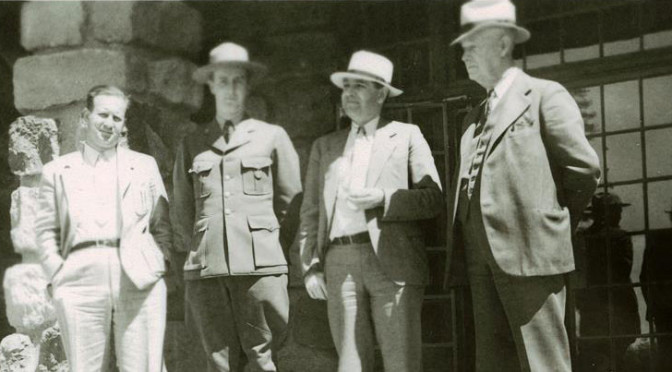Boardman seems more connected with the Mather school of developing park areas, where you develop places only when necessary.
Yes, I think that’s right. But the unfortunate thing about Sam’s acquisitions is that all he did was get the key feature of these parks. He didn’t obtain additional service areas. There is of course, a real problem with developing within your key feature. The classic example of this is Heceta Head, or Devil’s Elbow State Park, in Lane County, where you’re got people parking on the beach right next to the beautiful cove there where Cape Creek goes into the ocean. You’ve got everybody right there, along with a beautiful lighthouse reservation. In that particular case, there is land east of the park where they could have put a little development and allowed for a walk down to the cove.
This reminds me of criticism directed at Oregon state parks as being too compressed along highways.
That is a problem. You’ve got to realize, however, that the parks developed with the highway system. But Oregon also has probably more access to the coast than an other state. Highways next to the ocean were built purposely in order to protect the headlands from development. State parks were always directly related to the highway. Where they had parks that were away from the highways, like Golden and Silver Falls, in Coos County, the county had to declare their road to them a secondary state highway. The Highway Commission could then justify giving money to the park.
I’ve noticed that Cape Blanco is one of the few parks away from the highway and it is beautiful.
That’s a good example of a later acquisition. When Boardman was doing it, he did acquire an area north of there. It’s a place he called Henry Newbugh Park and now called Floras Lake. Sam acquired it primarily because of the unusual biological combinations of plant life, so it never was really developed. But Curry County has an airport right in the park. I think at the time Sam was acquiring land he always felt that you could get the service area later. He even says this in some of this writings. But prices are now so high and the demands for other things are so great that you can’t really justify spending the money on it.
The state seems to have relied more on donations than outright purchase up to the 1960’s.
There was some attempt to aggressively buy land in connection with the highway right-of-way. The Highway Commission would buy a piece for the highway and the balance would become part of a state park. You see, up until 1980, all the money for state parks came out of the highway fund. So everything had a be justified in terms of its highway orientation. In those days you didn’t go to the legislature and ask for land acquisition money. You went to the Highway Commission and they’d decide whether to fund the project.


